We have enzymes to thank for the natural transformation — they break down glycogen, fats, and proteins into the sugars, fatty acids, and amino acids that give aged meat its complex and savoury flavour (one amino acid produced is glutamate, which is a component of flavour enhancer MSG).

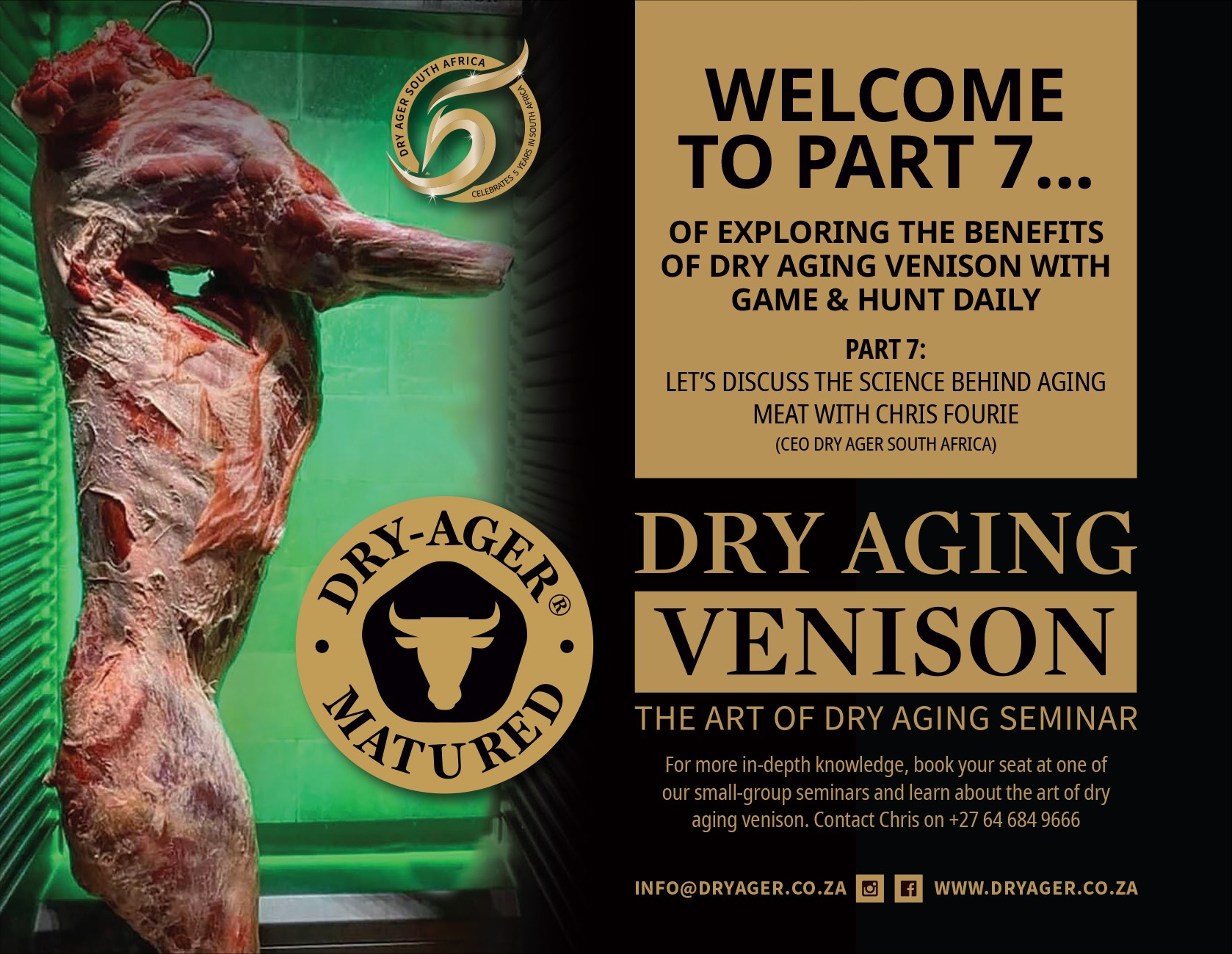
PART 7: Let’s Discuss The Science Behind Aging Meat With Chris Fourie
Today we give you a little insight into the magical mystery that is dry-aged meat. We will take deeper look at the biochemistry behind aging meat – the science behind this fascinating process – Dry Ager has taken all this into account and developed the perfect aging cabinet that is ready to age your meat at the touch of a button.
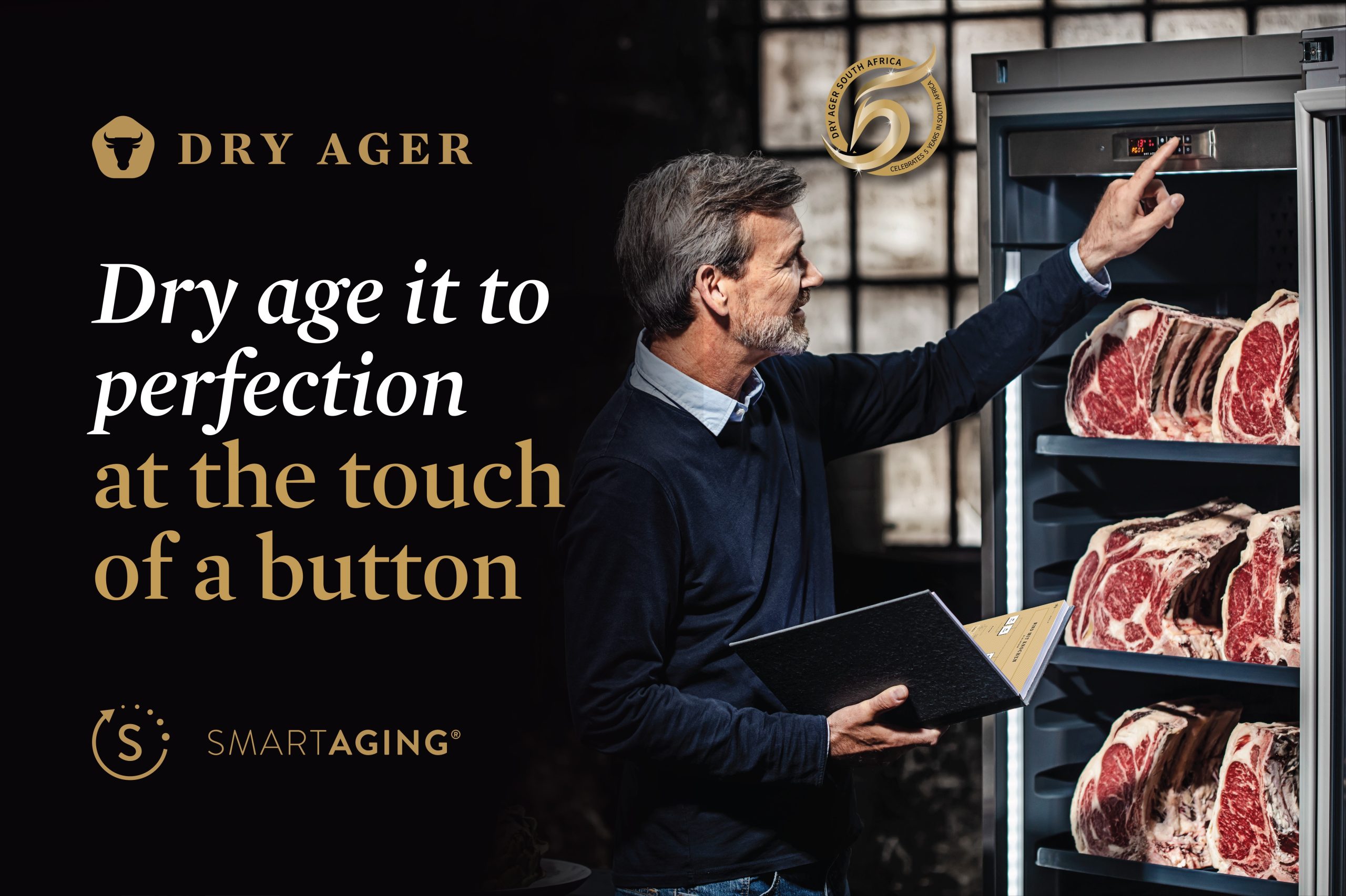

What is on the inside? The Science!
The role of intramuscular connective tissue in meat texture.
- The structure, composition and amount of intramuscular connective tissue (IMCT) vary tremendously between muscles, species and breeds, and certainly contribute to meat texture.
- With animal growth, collagen crosslinks become more stable, and the structural integrity of IMCT increases. These changes increase the mechanical properties of IMCT, contributing to the toughening of meat. Intramuscular fat deposits, mainly in the perimysium between muscle fiber bundles, result in marbling. This causes the remodelling of IMCT structures and reduces the mechanical strength of IMCT, contributing to the tenderization of beef.
- The IMCT has been thought to be rather immutable compared to myofibrils during post-mortem ageing of meat. However, recent studies have shown the disintegration of IMCT during post-mortem ageing of meat and its relationship to tenderization of raw meat, although its contribution to cooked meat is still controversial.
- Given the large influence of IMCT on meat texture, further elucidations of molecular mechanisms which change the structural integrity of IMCT during chronological ageing of animals and post-mortem ageing of meat are needed.
Aging game meat, including venison, breaks down connective tissues via naturally occurring enzymes, resulting in a product that is more tender. As well as it dehydrates the moisture within the muscles, which concentrates that meaty flavour you love. When possible, venison should be aged on the bone. The bone keeps the muscles elongated, which helps prevent contraction and subsequent toughness. Younger animals do not need to be aged as the older ones.
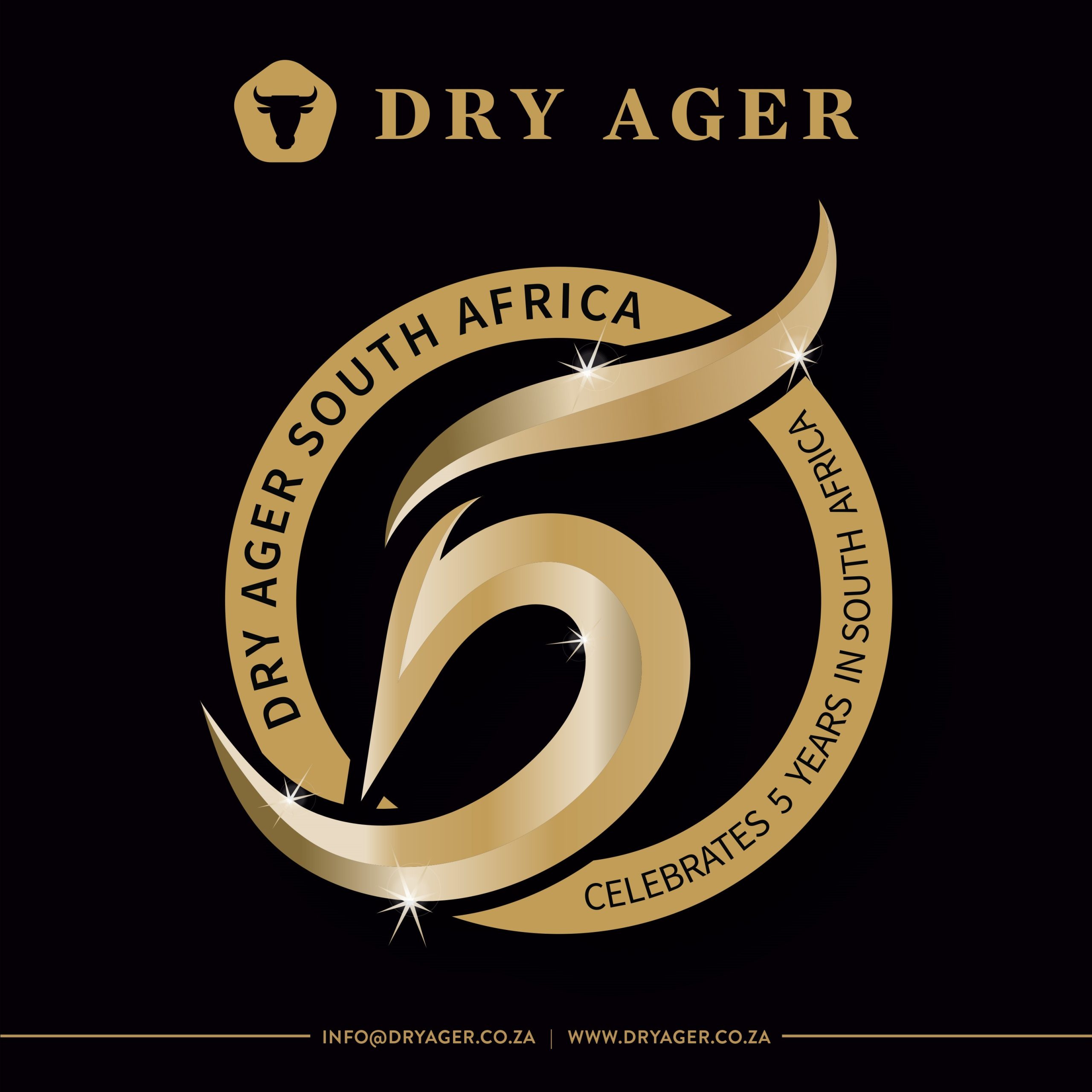
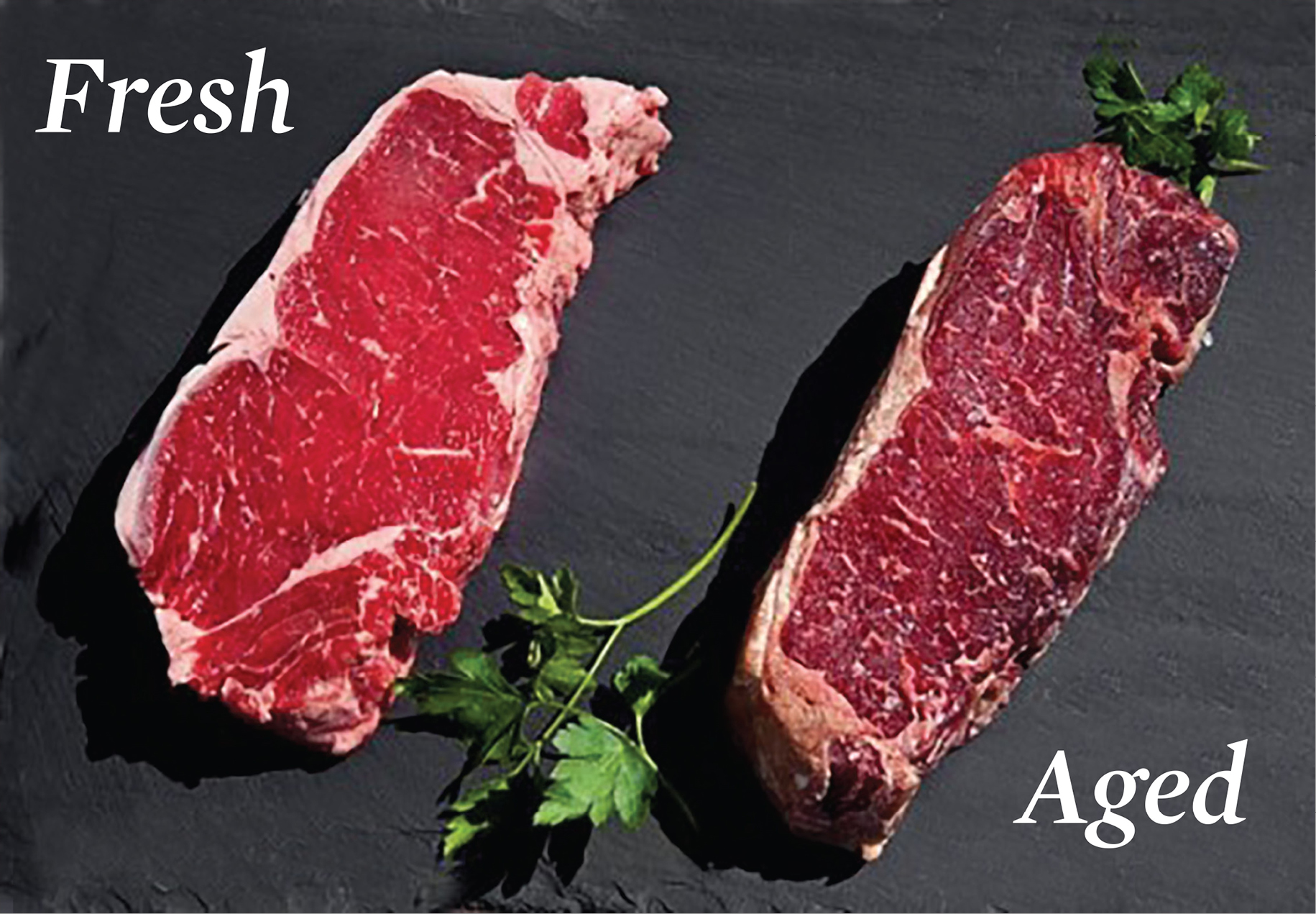
So with the above in mind, they key to dry aging venison is temperature control. The intelligent control of the Dry Ager Premium S models allows temperatures from 0 to +30 °C as well as humidity values between 40 and 90% to be controlled electronically at all times. Bacteria thrive on raw meat which leads to rotting meat and food poisoning. The Dry Ager cabinet inhibits bacteria growth and encourage enzymes to work, however it’s imperative to keep at the correct temperature. The other important consideration when aging meat is adequate air flow. With Dry Ager SmartAging® you can be sure that you have the right parameters at hand for the aging process of any food: at the push of a button. You just select the appropriate Dry Aging program via the control system.
Dry Ager does all this for you so you can just sit back and let your Dry Ager cabinet make your meat more delicious!
For more information or to book a small-group seminar contact Chris Fourie on +27 64 684 9666 or email chris@dryagersa.co.za
Keep a look out for Part 8 on 13 September 2023 and THINK BIG! Dry Ager Walk-in Chambers
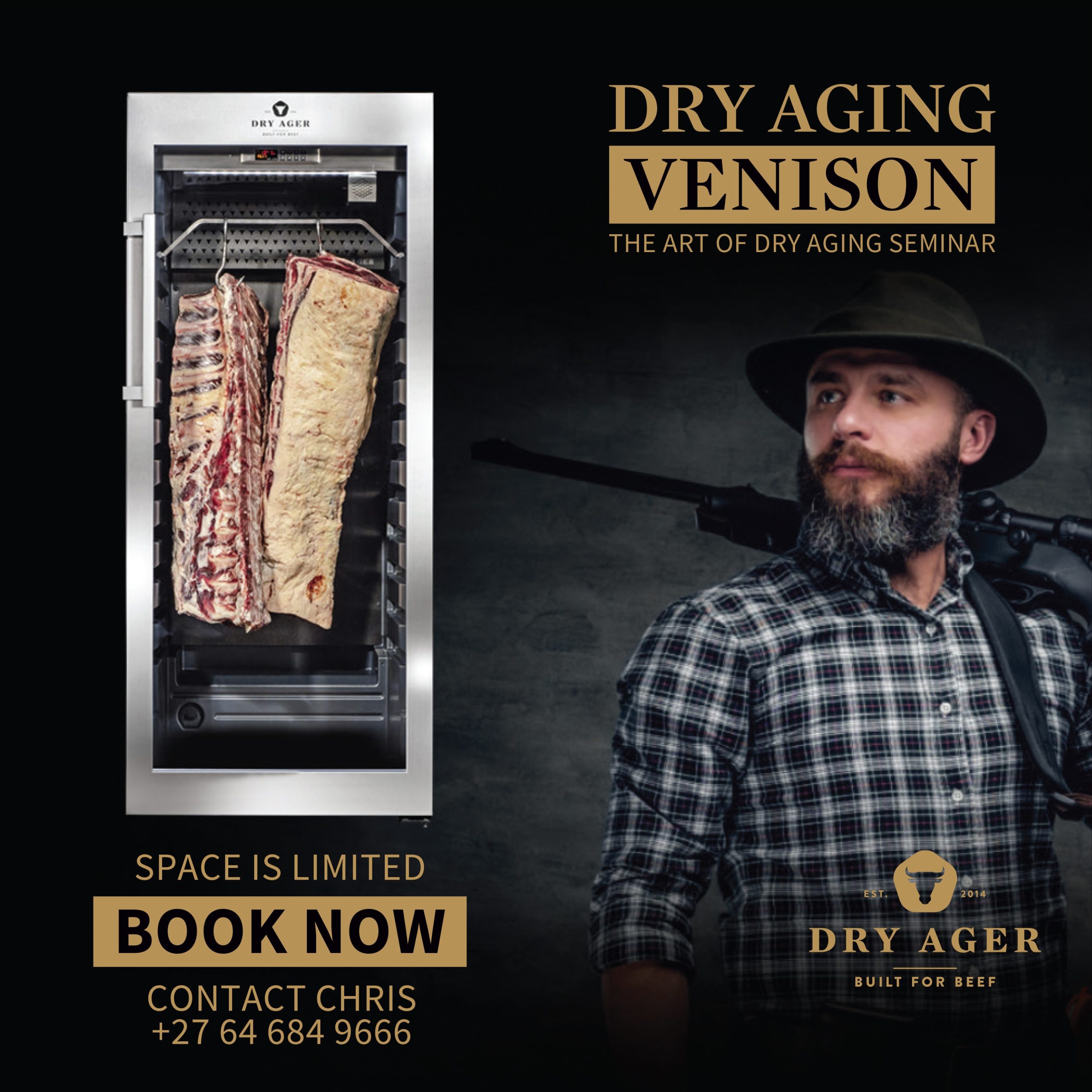
Copyright 2023 | All Rights Reserved | Powered by WILD & JAG / GAME & HUNT

